Student Blog
What are OS/OT?

Welcome, Friends! ⟩
August 24, 2016, by JRoe
What are OS/OT?
For this first blog post, we all wanted to share our stories about how we discovered and decided to pursue occupational therapy. Here it goes!
I’ve always had a passion for children. When I was in eighth grade, I decided I wanted to teach preschool because I knew I wanted to work with young children and I did not want a desk job. As such, in high school I began volunteering to work with children in various capacities. What I looked forward to most was being a counselor at a summer camp for children with special needs where I got the opportunity to be paired one-on-one with a camper. I became passionate about working with children with disabilities and that’s when my mother suggested I look into occupational therapy. At the naïve and stubborn age of 16, I said no — I was set on becoming a preschool teacher.
Fast forward a few years to my last semester at USC where I took OT 250, Introduction to Occupational Science and Occupational Therapy, with Dr. Kate Crowley. It was in this class that I learned more about the holistic and broad nature of the profession and began to think that maybe my mom’s initial suggestion wasn’t so terrible. However, I was still fixated on becoming a preschool teacher. The more time I spent teaching in a typical preschool classroom, the more I missed working with children who have disabilities and the one-on-one nature of the camp I was a part of. I slowly began to think that my mom had the right idea after all.
I began volunteering at a pediatric clinic and in a school district where I had the opportunity to observe the amazing work they were doing each day in an intimate setting. I was excited by the idea to foster relationships with my clients that could span years and help them achieve their individual goals. I knew I had found my calling when I saw the impact that these OTs had and how excited both the children and the therapists were to come in every day. I was hooked.
Since becoming an occupational therapy student, I’ve enjoyed furthering my knowledge about pediatric OT, but I have also had the pleasure of learning more about the other practice areas. My eyes have been opened to a new world and I am excited to see where my career takes me!
⋯

Changed My Mind to Change Some Lives ⟩
August 24, 2016, by Kimmy
Beginnings and Endings What are OS/OT?
Before entering USC as a freshman, I wanted a plan. I was crossing the country from a one-square-mile suburban town in New York, where I knew more than I wanted to about everyone who lived there. Naturally, coming to a university full of 34,000 new students was both thrilling and terrifying. Sure, I looked forward to meeting new friends and making new connections, but I was also afraid of becoming lost in a sea of undeclared majors.
Ever since I was in kindergarten myself, I believed I wanted to be an elementary school teacher. The job seemed perfect: I love kids, I love school, I love helping others. On one fateful day, I ran into my kindergarten teacher fifteen years after she taught me how to finger paint. I excitedly told her about my future career plans, waiting to see her eyes light up and tell me how proud she was.
“Don’t do it,” was her curt response instead.
“What do you mean? You were my favorite teacher, the one who inspired me to teach,” I countered.
At the time, I was a bit upset by my role model crushing my well-developed plans, and ultimately I would not let one naysayer get in the way of my own agenda, but her response made me think. It made me think that I was choosing a career based more on mere exposure rather than full consideration of all my options. Sure, I love kids, school, and helping others, but teachers are not the only people that love those things; teaching was just the only profession I knew about that fit the description.
In the midst of college applications, I searched for a bit of my own Lifestyle Redesign® (a branch of OT started right here at USC). I knew what I wanted in a career; I just didn’t know the name for it yet. But after considering other professions present in the school system, I remembered back to a room next to the gym in my old elementary school labeled ‘OT/PT.’ I knew what PT was, but OT warranted some extra research.
I don’t change my mind easily. I deliberate. So I read a description of OT online and immediately liked the sound of it, especially because it fit my requirements of loving kids, school, and helping others. But I wasn’t sold yet. I read many more articles and subsequently contacted numerous OT practices to volunteer for a more hands-on perspective. Ultimately, I presented my research to my parents, volunteered in a pediatric OT clinic during my senior year of high school, and met with the OT for my school district, all of which solidified my choice to become an occupational therapist.
I wanted to help others learn. At first, my mind understandably went straight to teacher. I still believe teaching is an incredibly powerful and respectable profession, but it was not the one for me. As an introvert, I am comforted by OT’s individual or small group treatment versus instructing a large class. As a science nerd, I relished the opportunity to take courses in anatomy, physiology, neuroscience, and kinesiology. As a health nut, I embraced the holistic wellness outlook of OT, which considers a person from all physical, psychological, and social aspects.
Jessica Kensky, the 2016 keynote speaker at the American Occupational Therapy Association conference, described occupational therapy as the place “where science, creativity, and compassion collide.” If there were ever a collision I would want to be in, it would be between those three aspects. OT has everything I want, and reciprocally, I offer knowledge, creativity, and compassion — a perfect fit. Throughout my career search, I discovered that a multitude of jobs exist, many more than people may know about. Though I had to explore a bit for my ultimate choice, I found it. Possibly more importantly, I realized the value of keeping my mind open to change. Intentions can alter, ideas can spark, people can change — and it is okay if not everything goes according to plan.
⋯
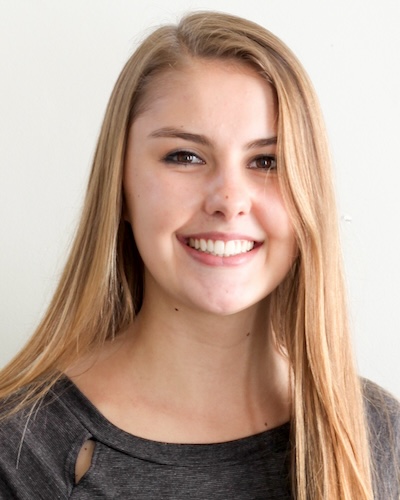
My Favorite Summer Occupation! ⟩
July 15, 2016, by Megan
Classes Getting Involved What are OS/OT?
One of my all-time favorite occupations is working with kids. This week, I was fortunate enough to help out at a summer day-camp program. I have been involved with this program for 8 years now, and I have got to say it is one of the highlights of my summer. This year has been exciting and different, also, in that I have been able to apply material from the Lifespan Development and Psychology courses I took last semester. Both of these courses (which we take in the Bachelor’s to Master’s program) address fundamental aspects of the development of children, and have been so applicable in daily life this week.
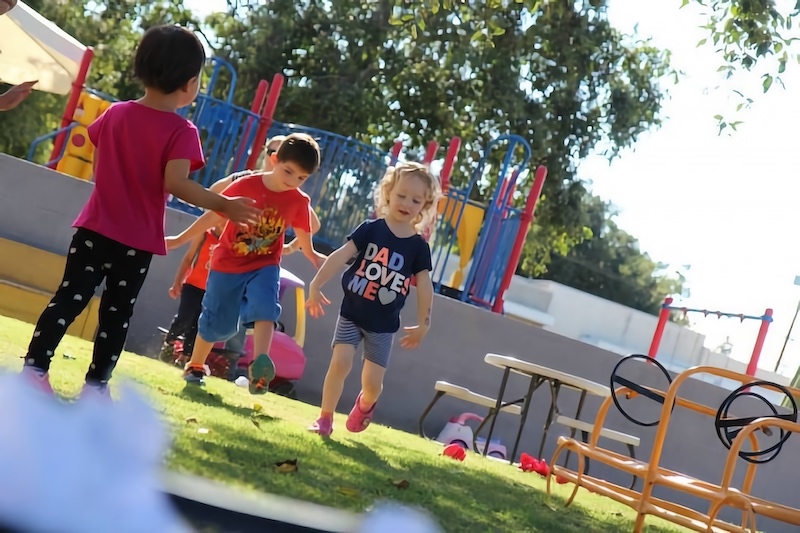
One of my favorite parts about studying to become an OT is how the coursework can be applied to individuals I meet each day, across the lifespan. Even simple activities like working for a summer day-camp are able to reinforce and practically display the material I have learned as an OT major thus far.

I was especially excited this year to be working with a group of crazy, cautious, and adorable TWO-year-olds!! These little ones take a lot of energy and patience, but my heart just melts to see them grinning from ear to ear as we do various crafts, games, lessons and songs.
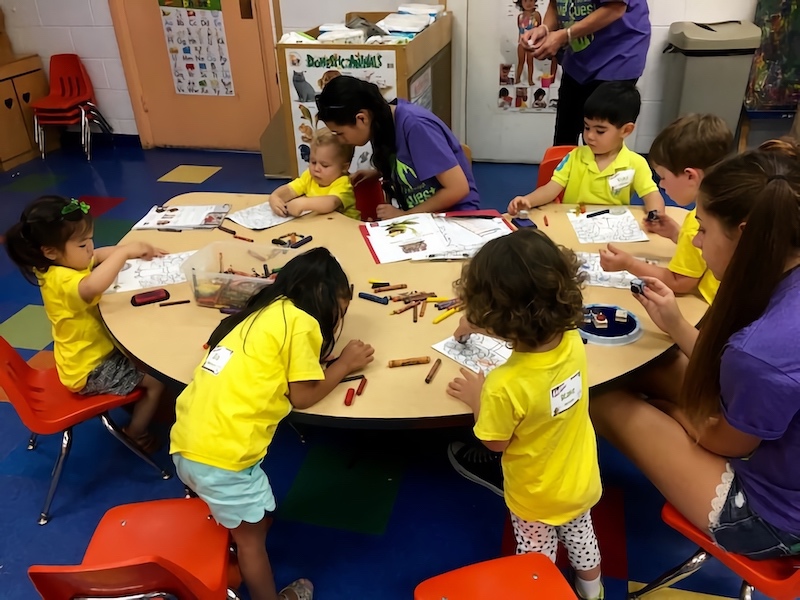

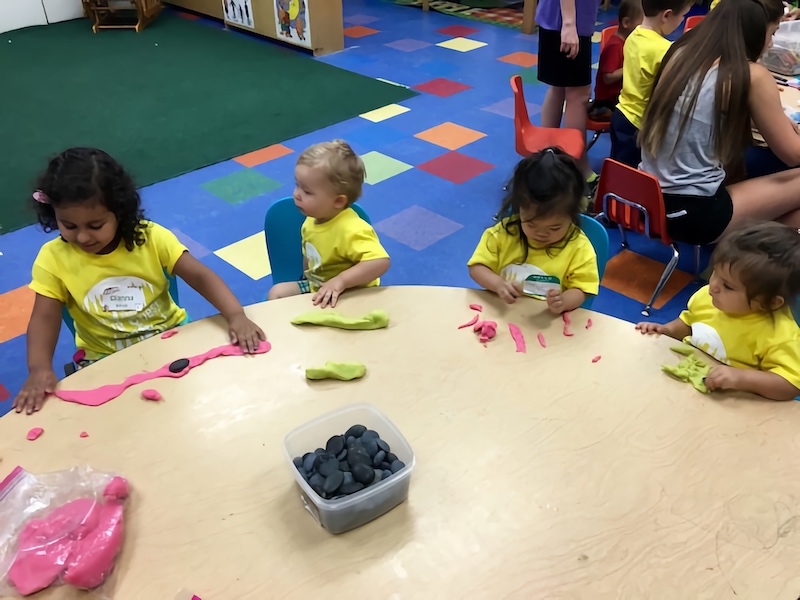
Not to mention, craft time this week looked a lot like the classrooms here that are currently set up for Creativity, Craft and Activity Analysis — a course the Entry Level Master’s students are currently taking! 😊

Another aspect of OT I have needed to use this week is creativity. Just as an OT takes each patient’s needs into consideration to establish a meaningful treatment plan, I have had to alter my approach when working one-on-one with each child. The toddlers in my group vary in their ability to verbally communicate, follow directions, complete activities . . . or even sit still for over 30 seconds. With this in mind, creativity has improved my ability to communicate with each child and ensured that our group has a productive and fun week!
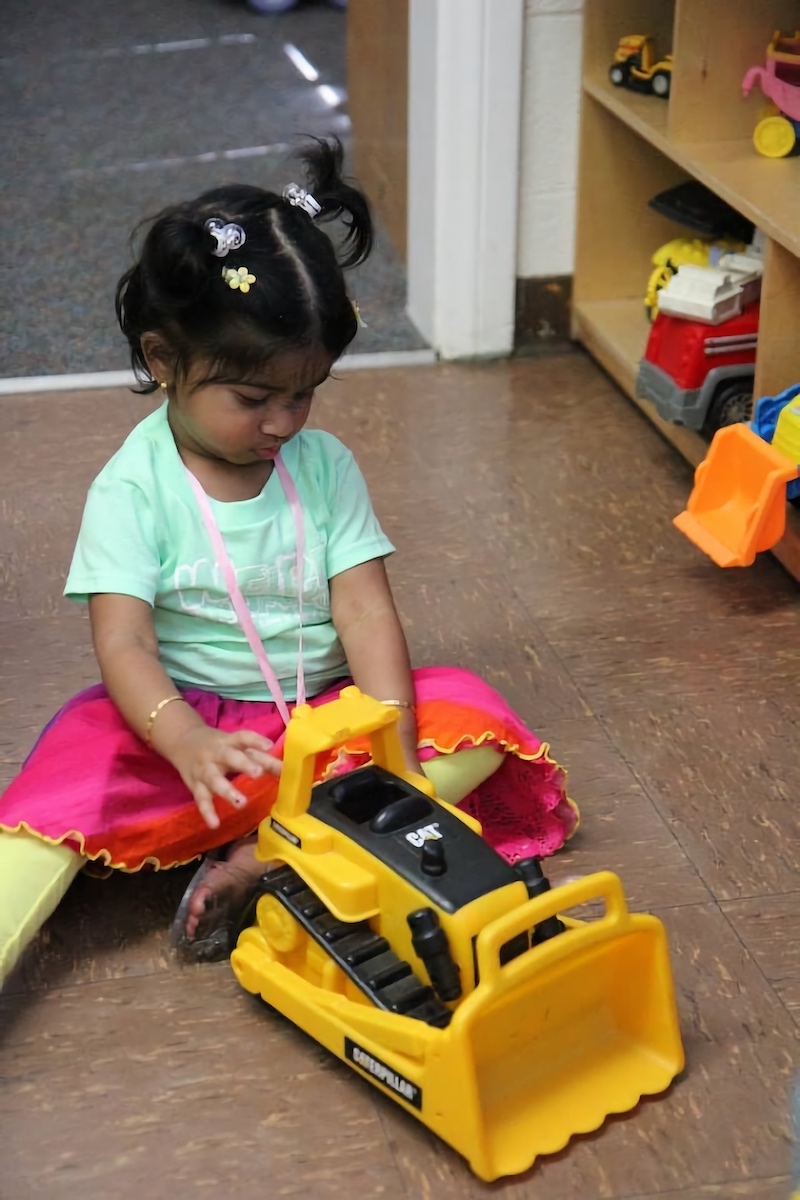


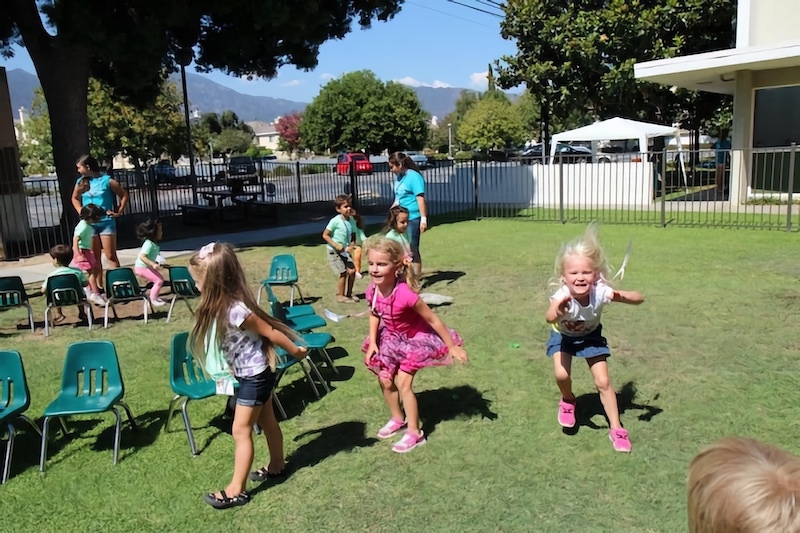
Nothing I would rather do this week than hang out with these cute kids! Two-year-olds can be tiring, but SO much fun at the same time! If you have some free time and love kids as much as I do, I highly recommend volunteering at a day-camp or summer program!
⋯

My Road to OT ⟩
May 19, 2016, by Megan
What are OS/OT?
For my first blog post, I am going to share a little about how I discovered occupational therapy! Now, I would be lying if I said that I had always known that this was my dream career. In fact, I spent most of my life dreaming of becoming an elementary school teacher. This dream may have been slightly influenced by the fact that my Mom and Grandma were both elementary school teachers — but, regardless, I was confident that I would follow in their footsteps. With a love for working with children and a desire to make an impact, I figured this was the most practical career for me to pursue. However, when I began volunteering as a preschool teacher, I could not help but feel as if something was missing. I loved being surrounded by children, watching the wonder in their eyes with each new discovery — but I felt restricted by the four walls of the classroom. I found myself frustrated by the generic approach I had to take to effectively teach all children, and desired a more individualized approach. What I truly loved about teaching were the one-on-one moments with students, the times when I could truly understand and engage with each student. However, because I started volunteering at this preschool at quite a young age, my dreams about the future seemed rather premature. I decided to put all this career planning on the back-burner until something truly caught my attention.
Almost as soon as I made this decision, I stumbled upon occupational therapy. The word “stumbled” could not be more accurate — I found OT through an experience I never saw coming. In the spring of 2009, I was admitted to the hospital following lapses in memory and irregular changes in behavior. Following two grand mal seizures, I was admitted to the hospital where I was diagnosed and treated for Systemic Lupus Erythematosus. While receiving chemotherapy transfusions and attending various rehabilitative sessions, I was exposed to a large variety of healthcare professionals. However, the endless support and reassurance I received from my occupational therapist has impacted me to this day. At a time where I felt so scared and helpless, she was able to bring peace. I remember feeling so triumphant when I was able to tie my own shoes or sign my name on a piece of paper. This occupational therapist was a source of light to my family in a time of such hardship. Once recovering and being discharged from the hospital, I could not stop thinking about how much this occupational therapist impacted me. I did know, however, that I wanted to be like her. I wanted to give back to others, to offer the same hope that I received all those years ago.
To be honest, I did not ever expect to find my future career this way. However, I am so thankful to have found such a fulfilling profession. I am equally as thankful to have had the opportunity to be a patient, and to have experienced firsthand how much impact an occupational therapist can have in someone’s life.
With each day I learn more about occupational therapy, I become more in love with the profession. Rather than feeling generic or formulaic, occupational therapy breeds creativity and innovative thinking. This profession is able to combine my fascination with the complexity of the human body with my utmost desire to give back to those in need, and I could not be more thrilled to be on the path toward becoming an OT!
⋯
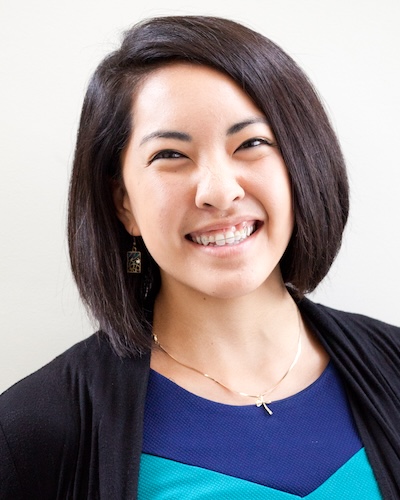
The POT of LUCK at the End of The Year Rainbow ⟩
April 28, 2016, by Rashelle
Beginnings and Endings Classes Community What are OS/OT?
Today is officially my last day of classes within the the Two-Year Master of Arts degree program for Occupational Therapy! This week my biggest stressors were preparing enough food to accommodate all of the potlucks that we have in celebration!
On Monday, the second year bible study leaders handed off the torch to the first year leaders with a wonderful picnic.
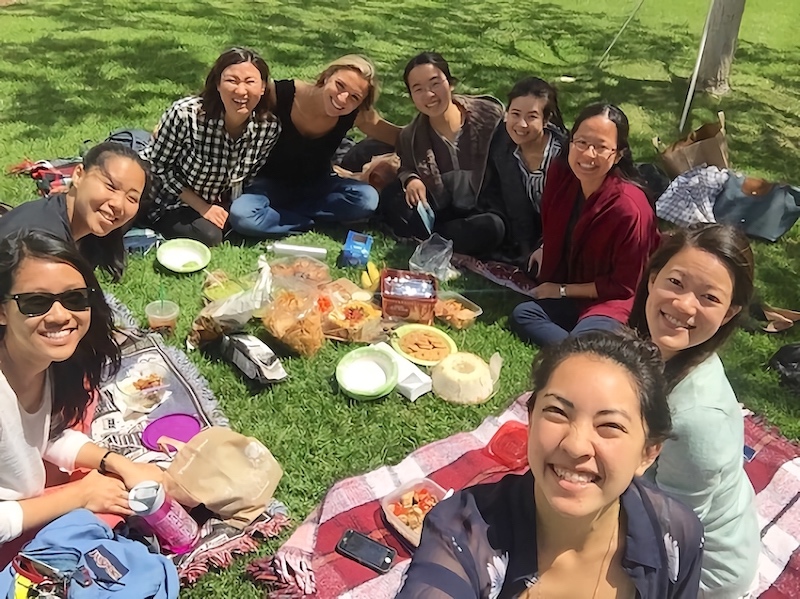
Bible Study Picnic Potluck
On Tuesday, we had our final practicum in OT 599: Occupation-Based Adult Neurorehabilitation, then celebrated with a giant feast!
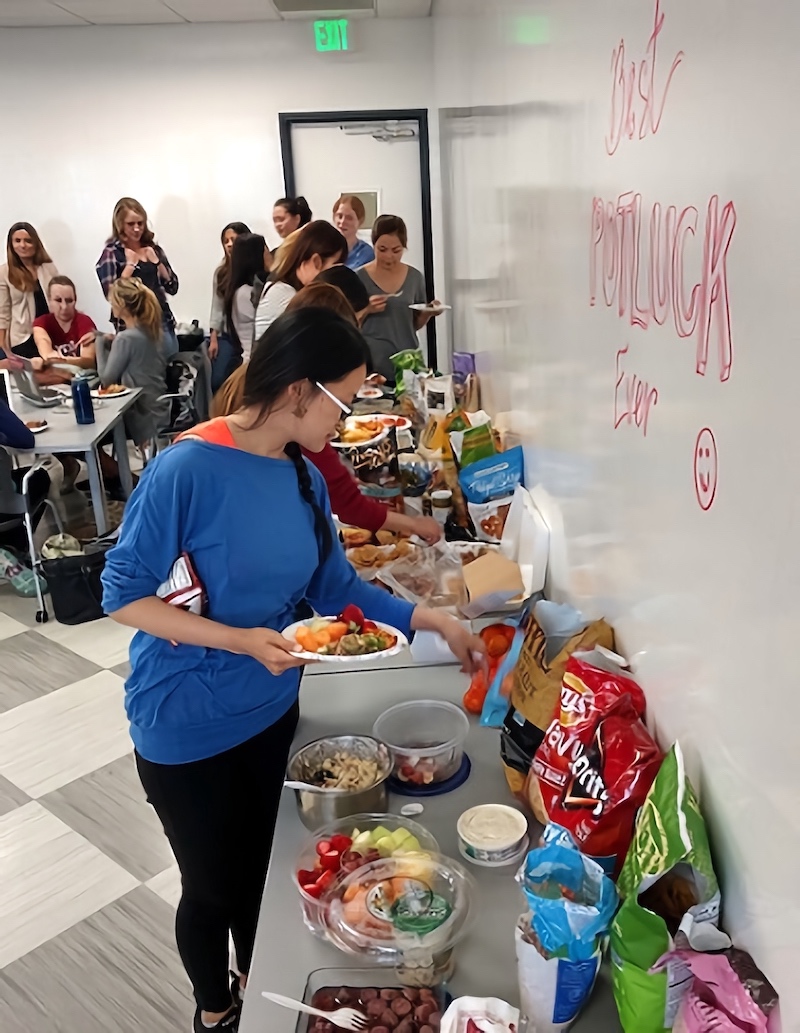
Neurorehabilitation Potluck
Then, today for my final class assignment, I will facilitate a group in OT 583: Lifestyle Redesign. I am a member of the group focused on, “Sensory Strategies for Wellness,” which Joe had previously mentioned in his blog. To lead this session I prepared different food items for my group members to sample. Each item was intentionally picked to serve as either an alerting or calming gustatory stimuli, in order to regulate one’s emotions and stress throughout the day.
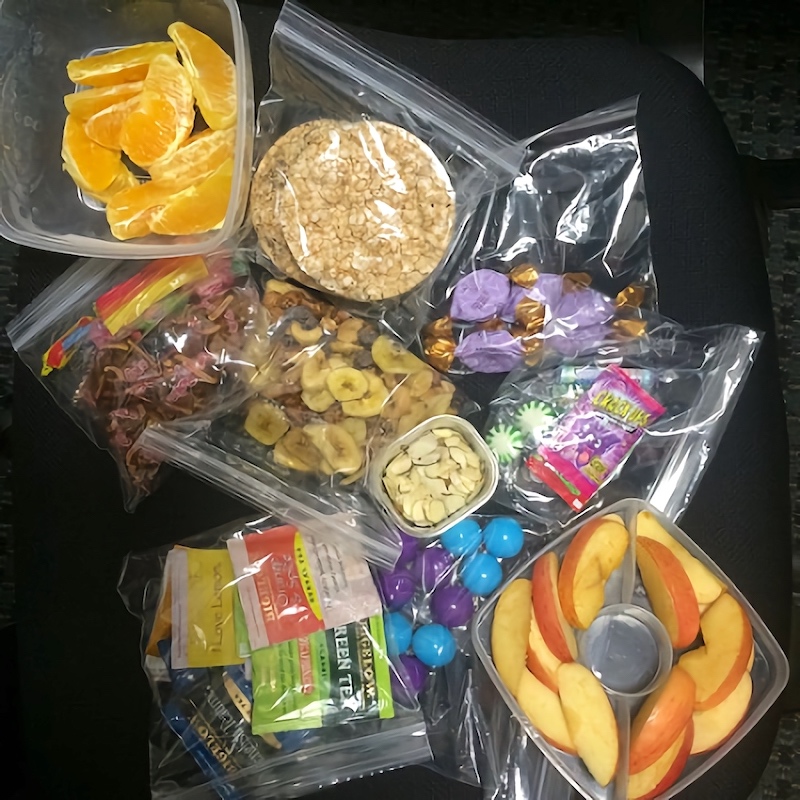
Sensory Strategies for Wellness Food
While my session is targeting taste as a sensory strategy for wellness, my classmates have led the groups prior, which discuss the other senses. Thus, to summarize and provide closure to our group, I also created this worksheet to remind everyone of what we have learned throughout our semester.

Toolkit for Sensory Strategies
Essentially, we built a toolkit of sensory strategies, to serve as a visual reminder, whenever we experience those emotions listed. I can’t wait to be able to utilize this with clients in the near future!
⋯





